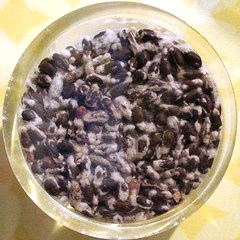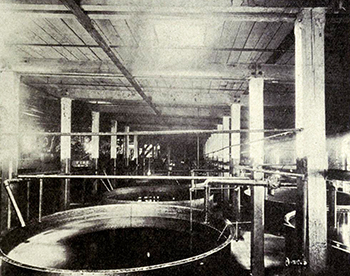
Before the Civil War, most cottonseed left behind after cotton ginning went unused in North Carolina. Some was saved for the next planting, and a few enterprising farmers recognized the seed's value as fertilizer and cattle feed. Generally, though, North Carolina farmers regarded the large piles of seed as ill-smelling, possibly harmful nuisances. By 1835 Lancelot Johnson of Edgecombe County had invented one of several cottonseed hullers, although it did not become the standard design of the antebellum period. Improved machinery designed after the Civil War made the separation of cottonseed oil, meal or cake, hulls, and linters (fibers adhering to the seeds) profitable. Oil and meal were the most valuable of these products; from the oil, processors produced lard compound, salad oil, and margarine. During the latter part of the nineteenth century, the use of cottonseed meal for fertilizer predominated over its use as cattle feed. Feed later became the more profitable product.
Despite the increasing use of cottonseed meal, many farmers still argued that it caused blindness, stiffness of gait, joint swelling, and appetite loss in cattle. In the early twentieth century, W. A. Withers and F. E. Carruth of the North Carolina Agricultural Experiment Station isolated the compound gossypol, discovered in 1899, from cottonseed meal. The purified compound proved toxic to small laboratory animals, although the researchers believed that cooking or other processing inactivated the gossypol and left cottonseed meal safe for cattle. J. O. Halverson and F. W. Sherwood, also of the North Carolina Agricultural Experiment Station, showed that cottonseed meal mixed with roughage could be safely fed continuously to lactating dairy cows.

Historically, farmers have tried to recoup the cost of ginning through the sale of the remaining cottonseed. Currently, selling seed more than compensates for ginning. Domestically, cottonseed oil is used in edible products including salad and cooking oil, baking and frying fats, and margarine. Cottonseed meal and cake, as well as cottonseed hulls, are still used as animal feed, and hulls are used to a lesser degree as a soil conditioner. The once-neglected linters are now used in products such as high-quality writing paper, currency, absorbent medical supplies, automotive upholstery, and felt.